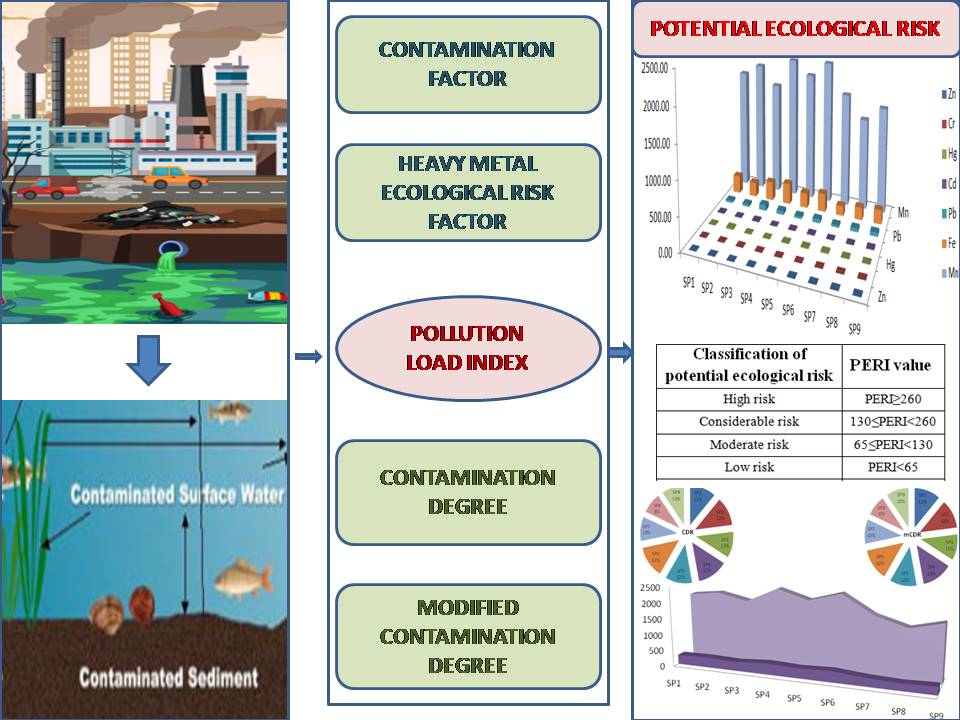
This study has been conducted to comprehensively evaluate ecological risk through pollution indices of chemical water quality parameters in the aquatic body of the Bollaram industrial area. For the data, the water quality parameters were analyzed seasonally throughout the year and depicted the significant enrichment of heavy metals. Our results indicated a very high degree of contamination (CDR>24). Further, the Pollution load index also reflected "very high polluted" with PLIX>5 in the study area. Overall, the decreasing trend of Contamination factor (CFR) for the Bollaram lentic aquatic system through various heavy metals was observed as Mn>Fe>Pb>Hg>Zn>Cr>Cd. Overall, the potential ecological risk index (PERI) value for all sampling sites varied from 1629.41 to 2505.37, reflecting very high ecological risks. Fe and Mn predominantly contribute a significant amount to the potential ecological risk in the Bollaram pond. A pollution load index (PLIX) value equal to zero signifies perfection, 1 represents only the occurrence of the baseline level of the various contaminants, whereas a value of more than 1 reflects progressive water contamination by the trace metals. The highest PLIX value was perceived at SP6 (10.23), followed by SP2 (8.79). The lowest PLIX value was obtained at SP4 (5.22), followed by SP7 (5.91). An elevated level of PLIX in the sampling sites reported that the disposal of municipal waste and sludge from small-scale industries illegally might have caused ecological risk to the water ecosystems.
Total file downloads: 13